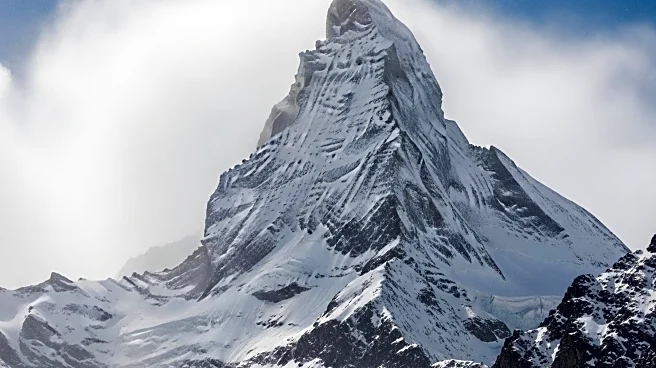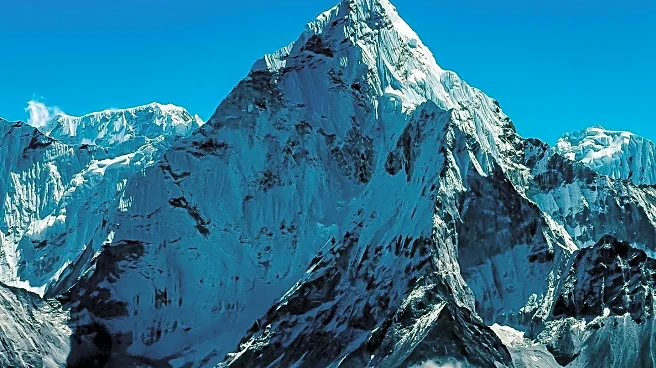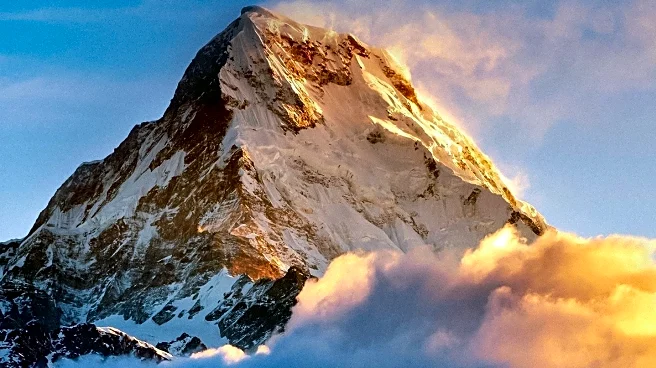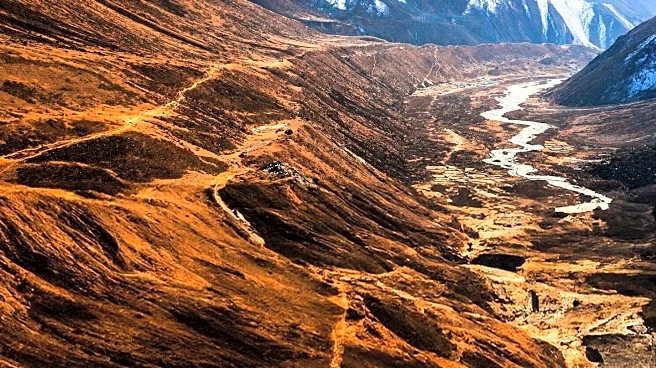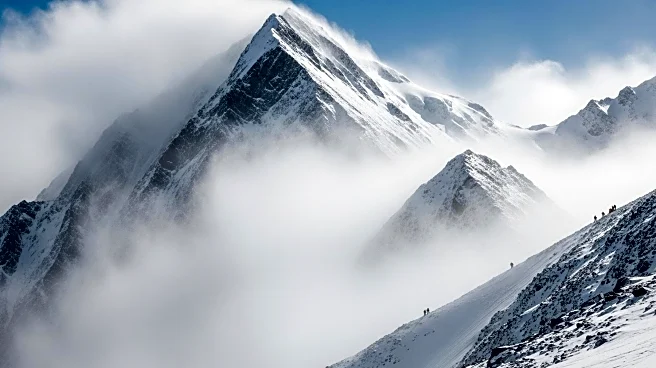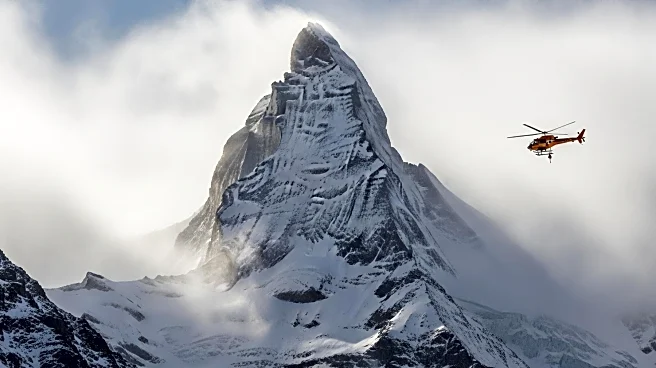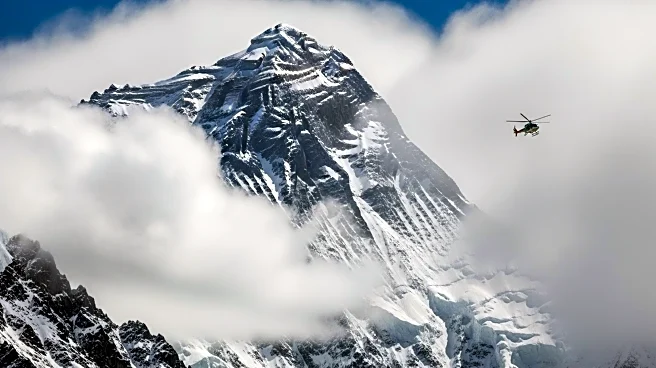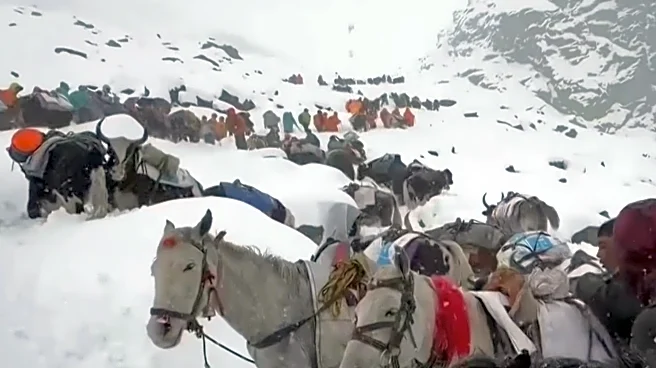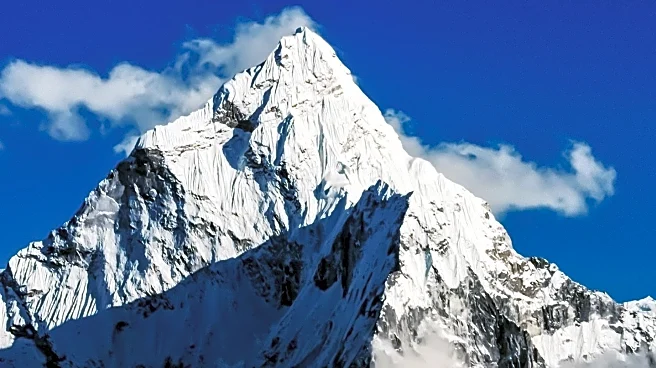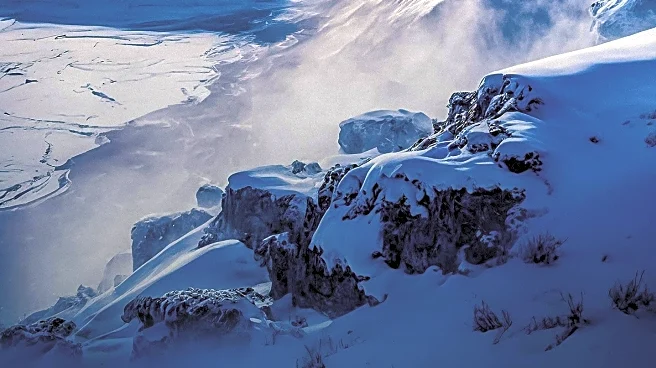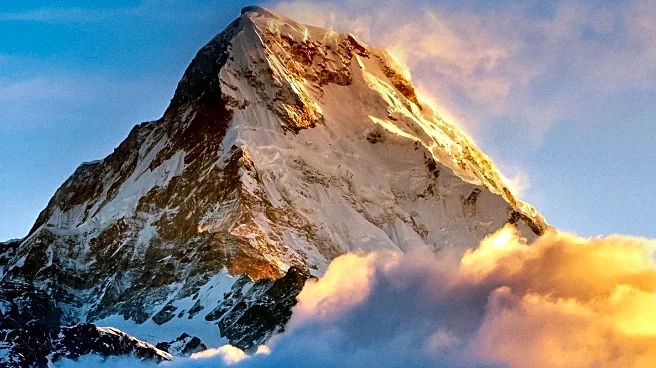What is the story about?
What's Happening?
A severe blizzard struck the region around Mount Everest, trapping hundreds of hikers on the mountain's eastern face. The storm, which began on Friday evening, has left more than 200 hikers awaiting rescue, while 350 have been brought to safety. The blizzard occurred during a national holiday in China, attracting many hikers to the area. The snowfall was reported to be intense, with snow piling up to three feet high, crushing tents and creating hazardous conditions. Rescue teams have been deployed to assist those stranded, and one hiker has died due to hypothermia and altitude sickness. The storm marks a significant deviation from typical October weather patterns in the Himalayas.
Why It's Important?
The unexpected blizzard on Mount Everest underscores the growing impact of climate change on weather patterns in the Himalayas. Traditionally, October is considered a favorable time for climbing due to the receding monsoon season and dry weather. However, the recent storm suggests that climate change is causing more erratic and extreme weather conditions, posing increased risks to climbers and the tourism industry. As global temperatures rise, the predictability of weather patterns on Everest and other peaks is diminishing, leading to potentially dangerous situations for hikers and guides.
What's Next?
Rescue operations are ongoing to evacuate the remaining hikers stranded on Mount Everest. The incident may prompt a reevaluation of climbing schedules and safety protocols in the region, considering the increasing unpredictability of weather patterns. Stakeholders in the tourism and mountaineering industries may need to adapt to these changes by implementing more robust safety measures and contingency plans. Additionally, the event could lead to further research into the effects of climate change on high-altitude environments and the necessary adaptations for safe climbing practices.
Beyond the Headlines
The blizzard on Mount Everest highlights broader environmental challenges posed by climate change, including the destabilization of traditional weather patterns. This event may serve as a wake-up call for policymakers and environmentalists to address the urgent need for climate action. The increased volatility in weather conditions could have long-term implications for the Himalayan region, affecting not only tourism but also local communities and ecosystems. As the climate continues to change, the need for sustainable practices and policies becomes increasingly critical.
AI Generated Content
Do you find this article useful?
